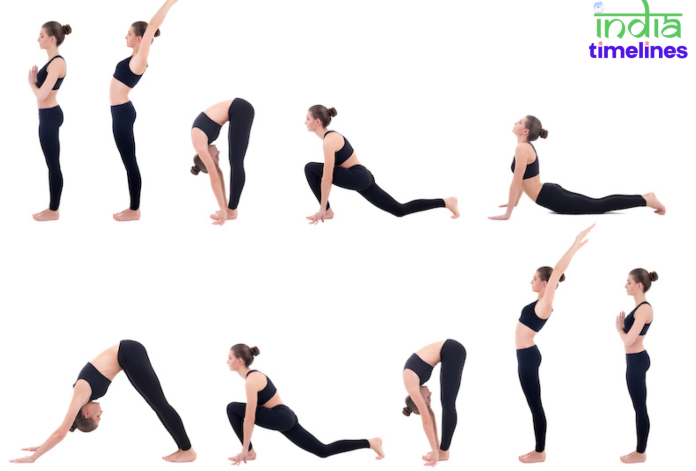
Yoga is an ancient practice that combines physical postures, breathing techniques, and meditation to promote overall health and well-being. Rooted in Indian philosophy, yoga has evolved over thousands of years and has become a popular form of exercise and relaxation worldwide. This comprehensive guide will explore the history, benefits, types, precautions, and tips for practicing yoga effectively.
What is Yoga?
Yoga is a holistic discipline that integrates physical, mental, and spiritual practices to achieve harmony and balance in life. The word “yoga” is derived from the Sanskrit root “yuj,” which means to join or unite. This union refers to the integration of body, mind, and spirit, as well as the connection between the individual and the universal consciousness.
History of Yoga
The history of yoga can be traced back over 5,000 years to ancient India. It has evolved through various stages, each contributing to its rich and diverse tradition.
- Pre-Vedic Period (Before 3000 BCE): Archaeological findings, such as the Indus Valley seals, suggest that yoga-like practices existed in prehistoric India.
- Vedic Period (1500 – 500 BCE): The earliest written records of yoga are found in the Vedas, a collection of ancient sacred texts. During this period, yoga was primarily focused on rituals and meditation to achieve spiritual enlightenment.
- Classical Period (500 BCE – 800 CE): The Yoga Sutras of Patanjali, written around 400 CE, systematized yoga into an eight-limbed path (Ashtanga) that includes ethical guidelines, physical postures (asanas), breath control (pranayama), and meditation (dhyana).
- Post-Classical Period (800 CE – 1700 CE): During this time, various schools of yoga emerged, including Hatha Yoga, which emphasized physical postures and breathing techniques to prepare the body for meditation.
- Modern Period (1700 CE – Present): Yoga gained international recognition in the 19th and 20th centuries through the efforts of Indian gurus such as Swami Vivekananda and B.K.S. Iyengar. Today, yoga is practiced by millions worldwide for its physical, mental, and spiritual benefits.
Benefits of Yoga
Practicing yoga regularly offers numerous benefits for physical, mental, and emotional health.
Physical Benefits:
- Improves Flexibility: Yoga poses stretch and lengthen muscles, increasing flexibility and range of motion.
- Enhances Strength: Many yoga poses require weight-bearing and balancing, which build muscle strength.
- Boosts Cardiovascular Health: Certain types of yoga, like Vinyasa and Ashtanga, provide cardiovascular benefits through continuous movement.
- Promotes Better Posture: Yoga helps to improve posture by strengthening the muscles around the spine.
- Aids in Weight Management: Regular practice can help maintain a healthy weight by improving metabolism and promoting mindful eating.
Mental Benefits:
- Reduces Stress and Anxiety: Yoga promotes relaxation and helps lower cortisol levels, reducing stress and anxiety.
- Enhances Concentration: The focus on breath and movement improves concentration and mental clarity.
- Promotes Emotional Stability: Yoga helps balance emotions and provides tools for coping with stress and negative thoughts.
Spiritual Benefits:
- Encourages Self-Awareness: Yoga fosters a deeper connection with oneself, promoting self-awareness and introspection.
- Promotes Mindfulness: The practice of yoga encourages mindfulness, helping practitioners stay present and engaged in the moment.
- Enhances Inner Peace: Regular practice can lead to a sense of inner peace and spiritual growth.
Types of Yoga
There are various styles of yoga, each with its own unique focus and approach. Here are some of the most popular types:
- Hatha Yoga: Focuses on physical postures (asanas) and breath control (pranayama) to prepare the body for meditation. It is a gentle introduction to the basic yoga poses.
- Vinyasa Yoga: A dynamic and flowing style that synchronizes breath with movement. It often includes a sequence of poses called Sun Salutations.
- Ashtanga Yoga: A rigorous style that follows a specific sequence of postures and is known for its physical intensity.
- Bikram Yoga: Also known as Hot Yoga, this style is practiced in a heated room and follows a set sequence of 26 poses.
- Iyengar Yoga: Emphasizes precise alignment and uses props such as belts, blocks, and blankets to help practitioners achieve proper form.
- Kundalini Yoga: Focuses on awakening the energy at the base of the spine through breath control, chanting, and meditation.
- Restorative Yoga: A gentle, relaxing style that uses props to support the body in restful poses, promoting deep relaxation.
Precautions for Practicing Yoga
While yoga is generally safe for most people, it is essential to take certain precautions to avoid injury and ensure a beneficial practice.
- Consult with a Healthcare Professional: If you have any medical conditions or injuries, consult with a healthcare professional before starting yoga.
- Start Slowly: If you are new to yoga, begin with beginner classes and gradually progress to more advanced poses.
- Listen to Your Body: Avoid pushing yourself too hard and respect your body’s limits. If a pose feels painful, modify it or skip it.
- Use Props: Utilize props to support your practice and achieve proper alignment.
- Stay Hydrated: Drink plenty of water before and after your yoga practice, especially if practicing in a heated environment.
- Avoid Eating Before Practice: Practice yoga on an empty stomach or wait at least 2-3 hours after a meal.
Tips for an Effective Yoga Practice
To get the most out of your yoga practice, consider the following tips:
- Set a Regular Schedule: Practice yoga regularly to build strength, flexibility, and mindfulness.
- Create a Comfortable Space: Find a quiet, comfortable space free from distractions for your practice.
- Focus on Your Breath: Pay attention to your breath and use it to guide your movements.
- Stay Present: Practice mindfulness by staying present and fully engaged in each pose.
- Be Patient: Progress in yoga takes time. Be patient with yourself and enjoy the journey.
Conclusion
Yoga is a transformative practice that offers numerous physical, mental, and spiritual benefits. By understanding its history, exploring different types, and following essential precautions and tips, you can integrate yoga into your daily life for improved health and well-being. Whether you are a beginner or an experienced practitioner, yoga has something to offer everyone on their journey to harmony and balance.




























